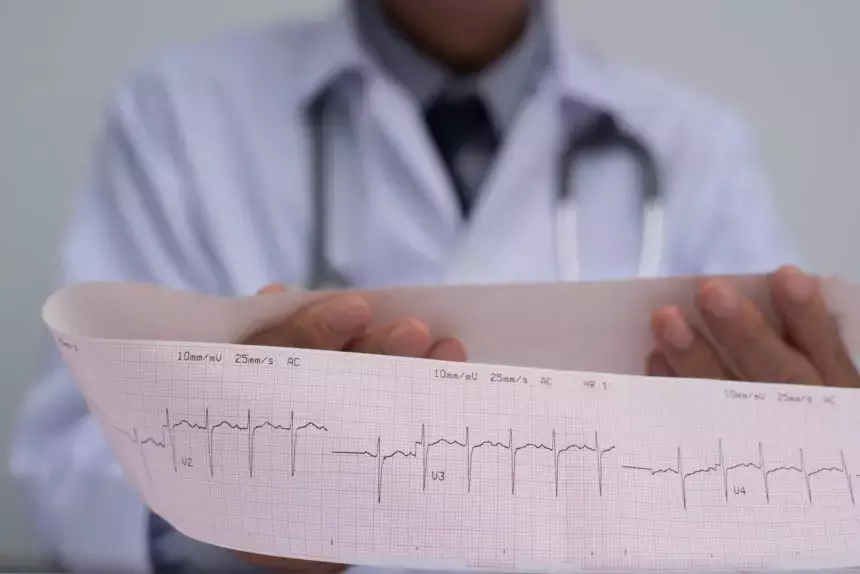- Home
- Medical news & Guidelines
- Anesthesiology
- Cardiology and CTVS
- Critical Care
- Dentistry
- Dermatology
- Diabetes and Endocrinology
- ENT
- Gastroenterology
- Medicine
- Nephrology
- Neurology
- Obstretics-Gynaecology
- Oncology
- Ophthalmology
- Orthopaedics
- Pediatrics-Neonatology
- Psychiatry
- Pulmonology
- Radiology
- Surgery
- Urology
- Laboratory Medicine
- Diet
- Nursing
- Paramedical
- Physiotherapy
- Health news
- Fact Check
- Bone Health Fact Check
- Brain Health Fact Check
- Cancer Related Fact Check
- Child Care Fact Check
- Dental and oral health fact check
- Diabetes and metabolic health fact check
- Diet and Nutrition Fact Check
- Eye and ENT Care Fact Check
- Fitness fact check
- Gut health fact check
- Heart health fact check
- Kidney health fact check
- Medical education fact check
- Men's health fact check
- Respiratory fact check
- Skin and hair care fact check
- Vaccine and Immunization fact check
- Women's health fact check
- AYUSH
- State News
- Andaman and Nicobar Islands
- Andhra Pradesh
- Arunachal Pradesh
- Assam
- Bihar
- Chandigarh
- Chattisgarh
- Dadra and Nagar Haveli
- Daman and Diu
- Delhi
- Goa
- Gujarat
- Haryana
- Himachal Pradesh
- Jammu & Kashmir
- Jharkhand
- Karnataka
- Kerala
- Ladakh
- Lakshadweep
- Madhya Pradesh
- Maharashtra
- Manipur
- Meghalaya
- Mizoram
- Nagaland
- Odisha
- Puducherry
- Punjab
- Rajasthan
- Sikkim
- Tamil Nadu
- Telangana
- Tripura
- Uttar Pradesh
- Uttrakhand
- West Bengal
- Medical Education
- Industry
Lead V4R may help in localization of LAD occlusion in AWMI, finds study

ST segment elevation (STE) in lead V4R is a sensitive indicator of RV infarction and when associated with inferior/posterior wall myocardial infarction (MI) , is associated with a worse prognosis. Occasional cases of STE in V4R in anterior wall MI (AWMI) have been reported but the significance of this finding has not been explored. In a recent study by Dehghani et al have shown that the appearance of ST-segment elevation in V4R lead in AWMI suggests involvement of proximal part of LAD and portends lower LVEF, bigger myocardial infarct size, and wrap around LAD.
The study results were published in Annals of Non-invasive Electrocardiology.
The LAD artery is responsible for the blood supply to the anterior part of the right ventricle. This could explain the occurrence of right ventricular infarction and also the ST-segment elevation in the V4R lead following the LAD obstruction; however, the location of the LAD artery stenosis is not well defined to justify this event.
The authors aimed to investigate the ST-segment elevation in V4R lead in patients with anterior myocardial infarction and also its effect on prognosis as well as the detection and prediction of the location of arterial stenosis in coronary angiography.
Data collection was performed by reviewing the hospital recorded files of 195 patients' suspicion of acute myocardial infarction who have been referred within 2 h of the onset of cardiac symptoms. The patients were then categorized into two groups with and without ST elevation in the V4R chest lead.
1. Comparing two groups showed a significantly higher rate of concurrent ST-segment elevation in V1 lead in those with ST-segment elevation in V4R.
2. Echocardiography on the day after anterior myocardial infarction showed LVEF <40% in in significantly higher number of patients with ST-segment elevation in V4R.
3. The lesions on proximal LAD were more common in the group with ST-segment elevation in V4R.
It was also found that the presence of ST-segment elevation in V4R was not associated with RCA or LCX involvements or even right ventricular infarction-related defect. In other words, ST-segment elevation in V4R is not limited to RCA involvement.
Also, by studying the data, it was found that the majority of patients who had ST-segment elevation in V4R lead also had ST-segment elevation in V1 lead that might be due to the proximity of the V1 derivation axis and the V4R lead. In this regard, it seems that by confirming ST-segment elevation in V1 lead, the likelihood of ST-segment elevation in V4R can also be expected emphasizing emergent proper treatment procedures because of its association with the risk for lowering left ventricular function and consequent poor prognosis.
Source: Annals of Non-invasive Electrocardiology: https://doi.org/10.1111/anec.12866
MBBS, MD , DM Cardiology
Dr Abhimanyu Uppal completed his M. B. B. S and M. D. in internal medicine from the SMS Medical College in Jaipur. He got selected for D. M. Cardiology course in the prestigious G. B. Pant Institute, New Delhi in 2017. After completing his D. M. Degree he continues to work as Post DM senior resident in G. B. pant hospital. He is actively involved in various research activities of the department and has assisted and performed a multitude of cardiac procedures under the guidance of esteemed faculty of this Institute. He can be contacted at editorial@medicaldialogues.in.
Dr Kamal Kant Kohli-MBBS, DTCD- a chest specialist with more than 30 years of practice and a flair for writing clinical articles, Dr Kamal Kant Kohli joined Medical Dialogues as a Chief Editor of Medical News. Besides writing articles, as an editor, he proofreads and verifies all the medical content published on Medical Dialogues including those coming from journals, studies,medical conferences,guidelines etc. Email: drkohli@medicaldialogues.in. Contact no. 011-43720751


